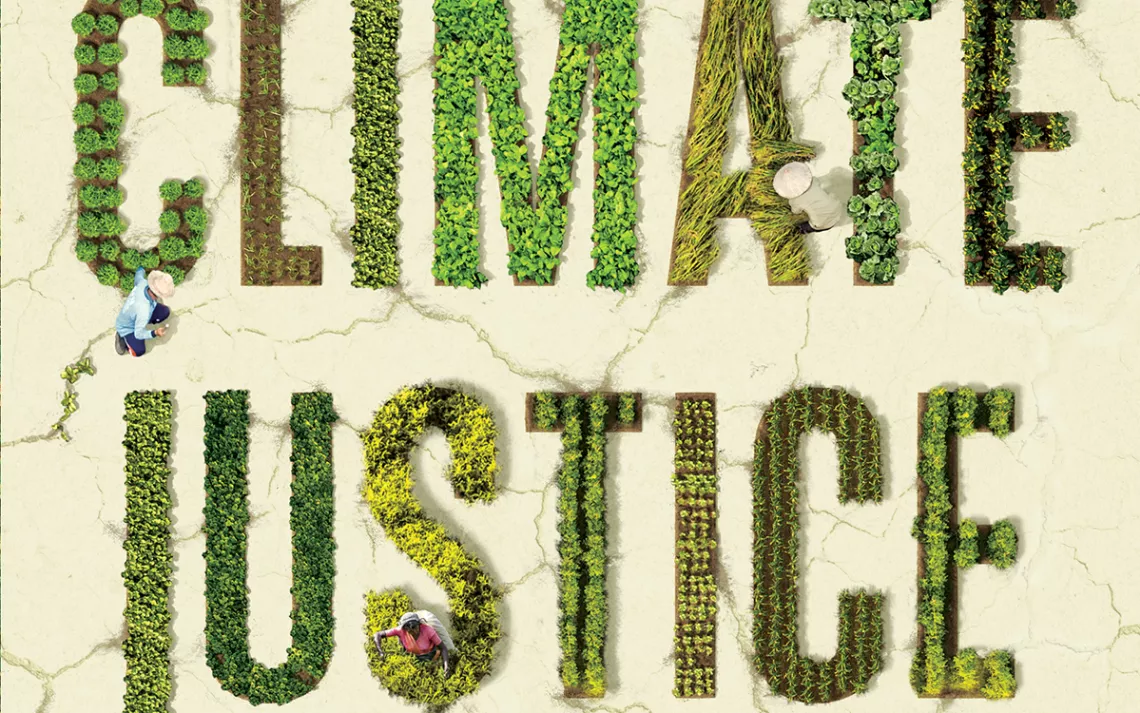“Climate Justice” Is the Antidote for Your Climate Change Paralysis
Mary Robinson’s new book highlights frontline activists coping with a new reality

Patricia Cochran remembers growing up in a world of permanent ice and snow, but now when she visits her childhood home in Nome, Alaska, the ice has been replaced by the open ocean. Cochran, a Yupik woman as well as a scientist and activist, has made it her life’s mission to help Indigenous communities across Alaska and the Arctic deal with the impacts of climate change, especially sea level rise. For many communities, this means relocating, for which Cochran helps to secure funding. Cochran’s story and that of other climate activists from around the world are detailed in Mary Robinson’s new book, Climate Justice: Hope, Resilience, and the Fight for a Sustainable Future (Bloomsbury Publishing, September 2018).
In 1990, Robinson became Ireland’s first female president. She then served as the UN high commissioner for human rights from 1997 to 2002 and the UN special envoy on climate change from 2014 to 2015. She is also a member of the Elders, an organization of global leaders dedicated to promoting peace and human rights. However, she focuses little on her accomplishments in the book. Rather, she uses her powerful platform to highlight the work of mostly female climate activists in frontline communities that are already reeling from the effects of climate change. As Climate Justice illustrates, the brunt of climate change is borne by the world’s marginalized, and women are most at risk. But they are also often the ones leading local efforts to prepare for and adapt to frightening new realities.
Written in a post-Trump world, Climate Justice burns with urgency. The activists in the book have little in common but shared misfortune, from sinking islands to debilitating drought that leads to failing crops. The thread that connects them is their optimism that change is possible. And each displays an unwavering commitment to justice. Vu Thi Hien, a grandmother of four and a professor in Hanoi, Vietnam, left her teaching position in Hanoi, Vietnam, to help Indigenous communities protect the country’s ravaged forests. Through her NGO, she worked to secure UN funding for forest preservation and to formally establish ethnic minorities as guardians of their territory.
Female solidarity may, Robinson argues, prove to be the strongest tool in our arsenal in the fight against climate change. “From my travels around the world, I have witnessed, over and over again, the power of women as agents of change,” she writes. The women featured in Climate Justice have joined councils and testified in front of the UN. They have organized grassroots community groups to help their neighbors and family members cope with climate change. For example, Hindou Oumarou Ibrahim, who is part of the M’Bororo, a nomadic pastoralist community in Chad, became an activist after witnessing her people struggle to find food and raise their livestock on dwindling range, all while experiencing discrimination by non-pastoralists. She learned the term “climate change” in the year 2000 and has been fighting it ever since. She attended a UN climate conference in 2006 to voice her concerns but was granted only “observer status.” Undeterred, Oumarou Ibrahim formed her own nonprofit. Using traditional knowledge and community-sourced data, she developed a 3D map of resources in her community and brought it to government officials to demonstrate the effects of climate change. She is now co-chair of the International Indigenous People’s Forum on Climate Change. Her story brings to light how frontline women have often been shut out of conversations about climate change in centers of power. Rather than give up, the women in Climate Justice form their own coalitions to push for change as well as advocate for equity.
As inspiring as these stories are, they point to the fundamental injustice that most of these activists face in having to solve a problem they did little to create, given that climate change is primarily caused by industrialized nations. The message from grassroots organizers like Uganda’s Constance Okollet is clear: The first world has to take responsibility, now. “Everyone across the world should understand what is happening. We, the people at the grassroots level, are suffering the worst effects of climate change,” she says in Climate Justice. Families in Okollet’s community first believed that the droughts and bizarre weather they were experiencing were punishments from an unforgiving God. “It was not until I went to a meeting about climate change that I heard it was not God, but rich people in the West that were doing this to us. We are asking that they stop or reduce their emissions,” Okollet says.
Robinson considers herself a latecomer when it comes to grasping the immensity of the climate crisis. It wasn’t until the birth of her grandson in 2003 that she began to seriously consider the burden that climate change places on future generations. “Holding this tiny baby, I instantly felt the threat that climate change would pose to him—and thereby to all humanity,” she writes.
The realization transformed Robinson into a tireless advocate for climate justice who works to elevate the voices of those most impacted, like Okollet, Oumarou Ibrahim, and others featured in her book. “What I have learned from those who inspired me to tell their stories is that we need to take personal responsibility for our families, our communities, and our ecosystems,” she writes. “And we need to do it with empathy and support for those less responsible for the climate problem, who are suffering more. They are showing the way despite having more barriers to overcome.”
 The Magazine of The Sierra Club
The Magazine of The Sierra Club



